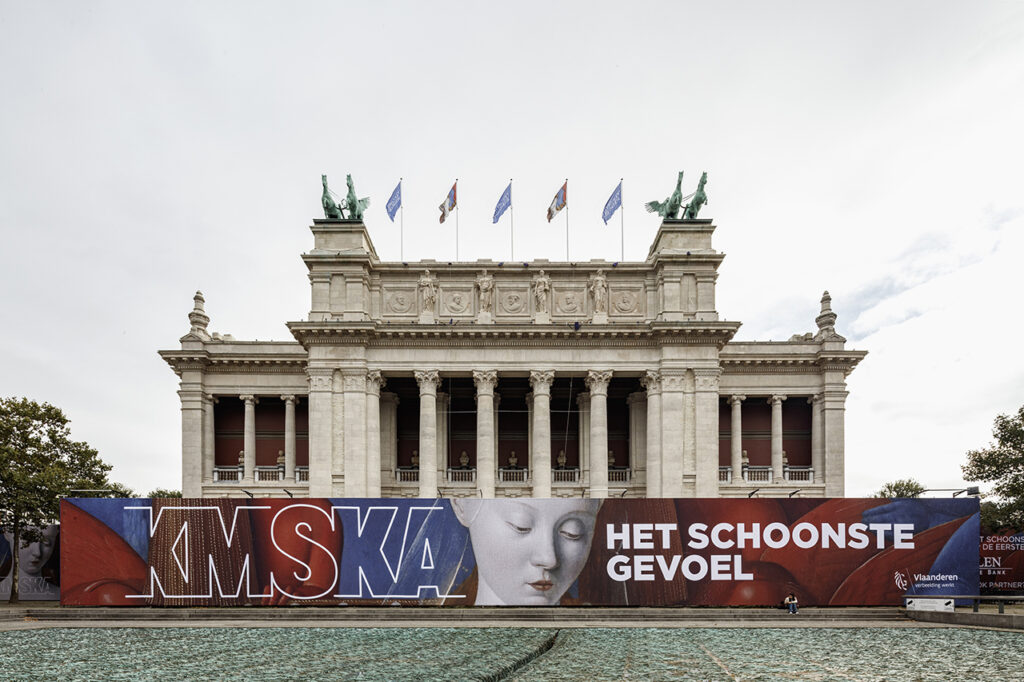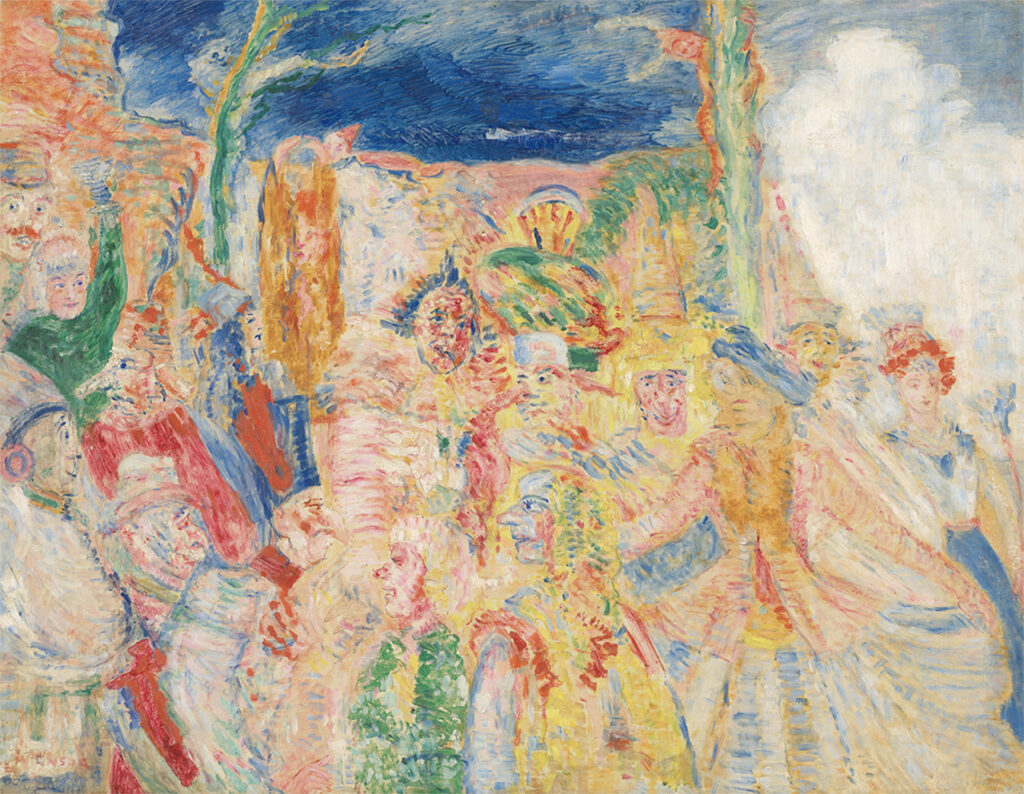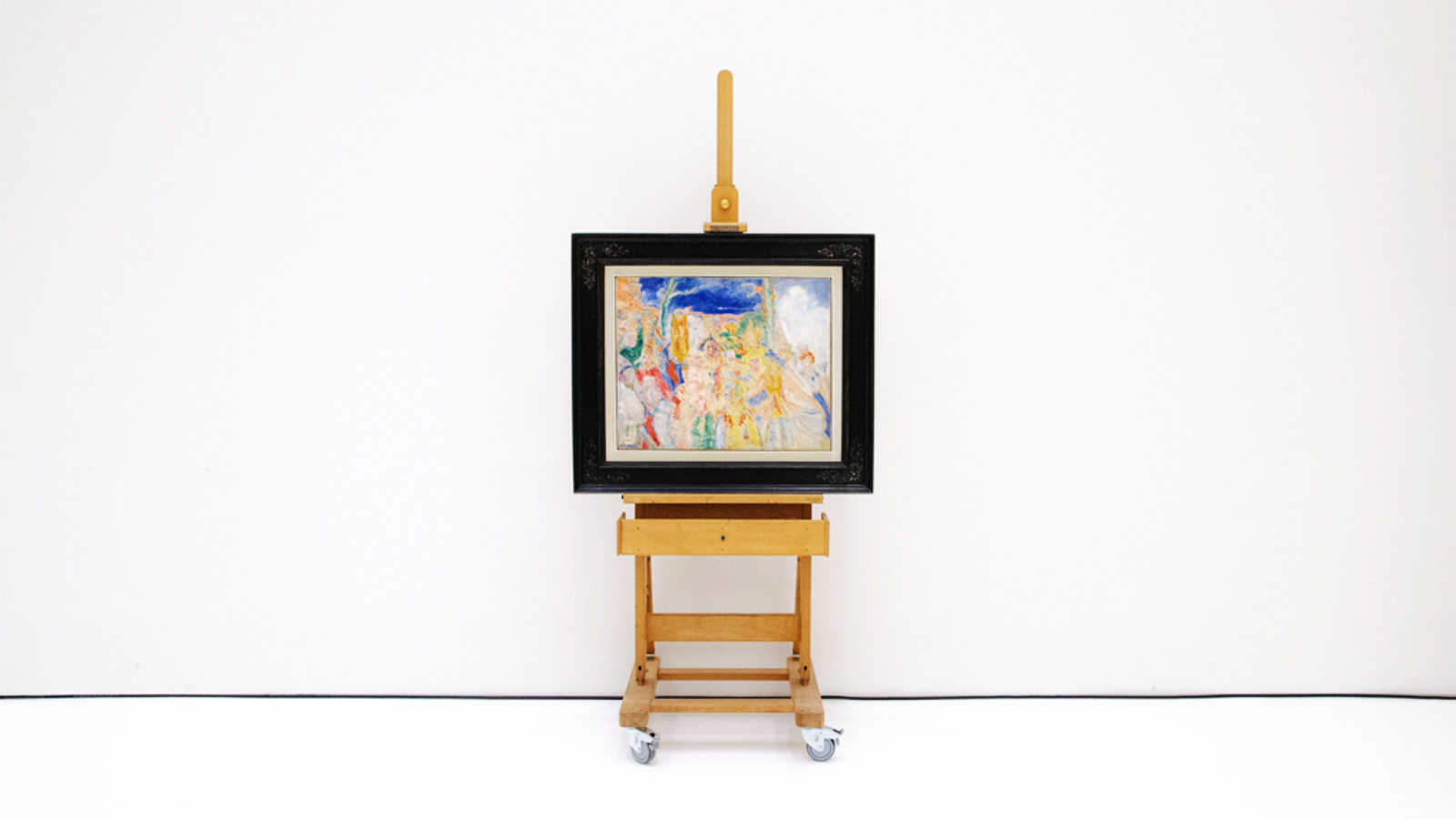For more than a decade, the Royal Museum of Fine Arts Antwerp (KMSKA) has been undergoing a major renovation to update and append a contemporary wing to its neoclassical structure. It’s due to reopen on September 24, when the Belgium institution, home to 19th century art, Flemish Renaissance works, and products of the Antwerp School, will present its new face and of course, be duly greeted by a hyper-modern cultural landscape newly accelerated by creative technologies.
But KMSKA already has its eye on that horizon: last week, long before its physical unveiling, the museum launched itself on-chain. On April 27, it became the first European institution to offer art security tokens (ASTs), allowing buyers to own a virtual share of an Expressionist work in its collection.
What happened

Ahead of its physical reopening, KMSKA has commenced its first AST offering centered on James Ensor’s “Carnaval de Binche.” Image: Karin Borghouts / KMSKA
Last week, in partnership with investment platform Rubey, KMSKA launched its first AST offering centered on Belgium artist James Ensor’s 1924 canvas “Carnaval de Binche.” The artwork has been virtually fractionalized into one million equal parts, registered on the Ethereum/Polygon blockchain, with each share priced from €150 (about $158).
These AST buyers will form a community that KMSKA has plans to cultivate and engage. For one, they’ll be regularly updated with any information related to the work, whether that be temporary loans or fresh scientific insights. Additionally, KMSKA has broached exclusive shareholder perks, such as a private viewing of the painting upon the institution’s reopening.
What are art security tokens?
Very basically, security tokens represent shares of a company or physical asset, conferring fractional ownership that is preserved on the cryptographic ledger. In this, they’re unlike non-fungible tokens, which are minted of a single and indivisible asset, or utility tokens, which grant its holders access to a specific service. Security token offerings also have to be registered with a financial market authority and as such, operate in a regulated market.
When applied to the art market, security tokens offer collectors opportunities to invest in and own denominations of particular works of art. Benefits work both ways: for the seller or token issuer, it’s a revenue stream, while buyers or token-holders get to enjoy a stake in a valuable work of art, in addition to certain financial rights and individual-level perks.
Why it matters

The offering leverages the blockchain to fundraise for the museum, which hopes to use the proceeds to purchase the Ensor painting for its collection. Image: “Carnaval de Binche” by James Ensor, 1924 / KMSKA
For KMSKA, its debut AST offering largely represents a form of fundraising — one that leverages the blockchain in a way that puts the museum on a tech-forward footing ahead of its reopening. With the proceeds from the sale, the museum intends to purchase “Carnaval de Binche,” which has long been held privately, in the hopes of further expanding its Ensor collection, already the largest in the world.
Rather than pursuing a few large donations, the offering presents many potential investors with a low entry fee that helps democratize and make accessible art ownership. If KMSKA fulfills its promise of engaging token-holders, this could mean a real shift, not just in how institutions financialize their holdings, but how they might purposefully share ownership of a work with patrons.
And for these investors, they potentially get to see financial returns (or losses) based on the net realization value of the painting. There are bonus perks to be had, if not the bragging rights of virtually co-owning an artwork without having to undertake the matter of conservation, insurance, or storage.
What they said
“KMSKA will be more than a place that displays art. We are fully committed to engaging our visitors and token holders in our collection and operation.” — Luk Lemmens, President, KMSKA
“Technologically, these art security tokens are the ultimate innovation in the blockchain environment. However, the social element is just as important. Investing in art security tokens is a true impact investment.” — Peter Hinssen, Tech Entrepreneur and Partner, Rubey



